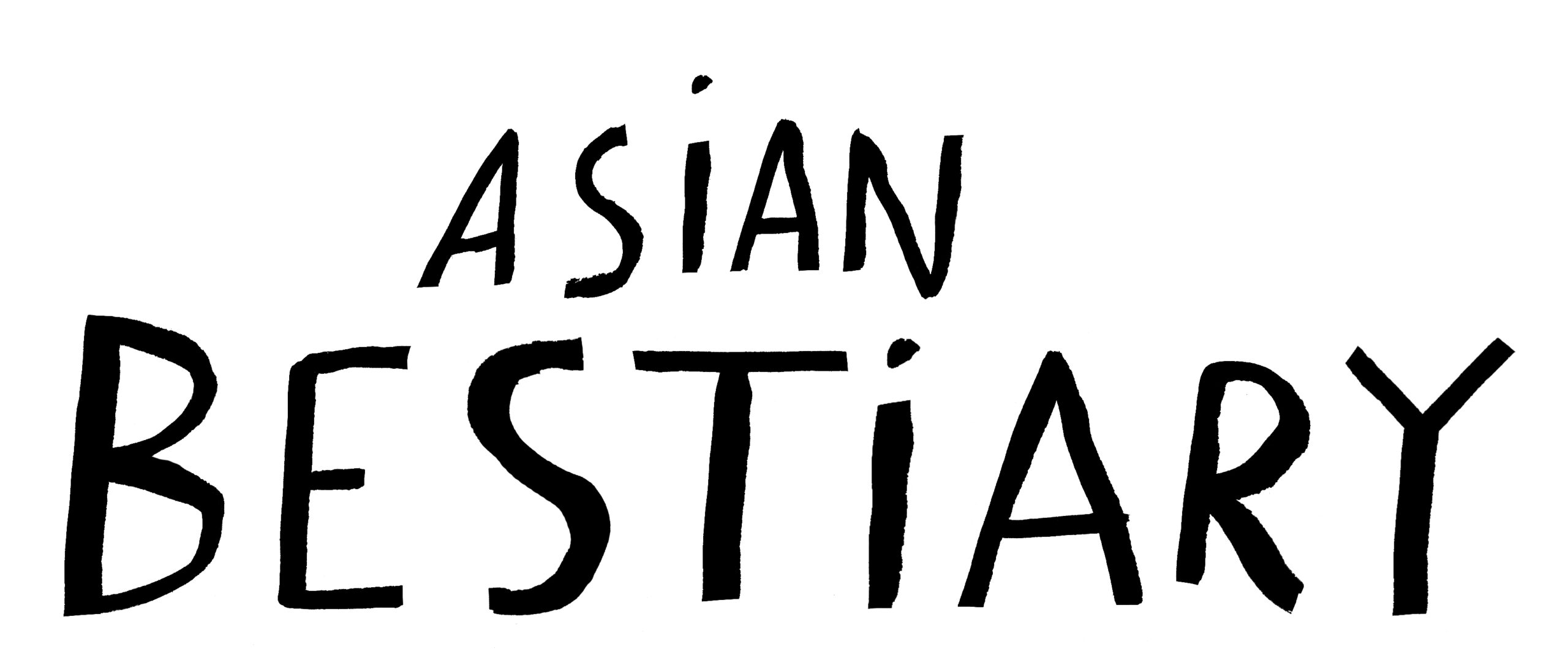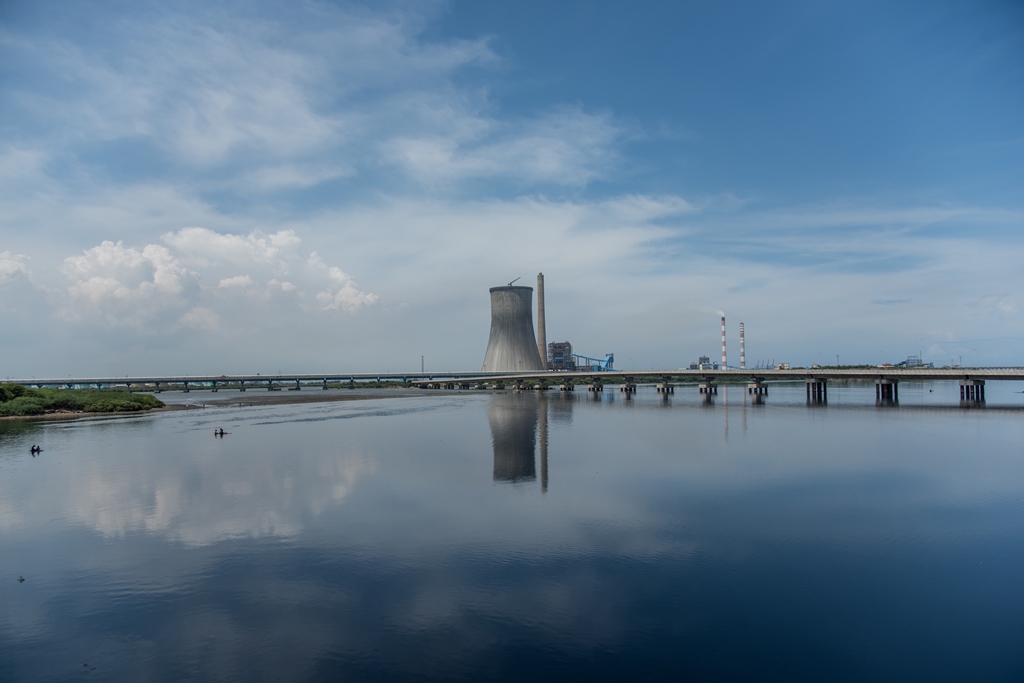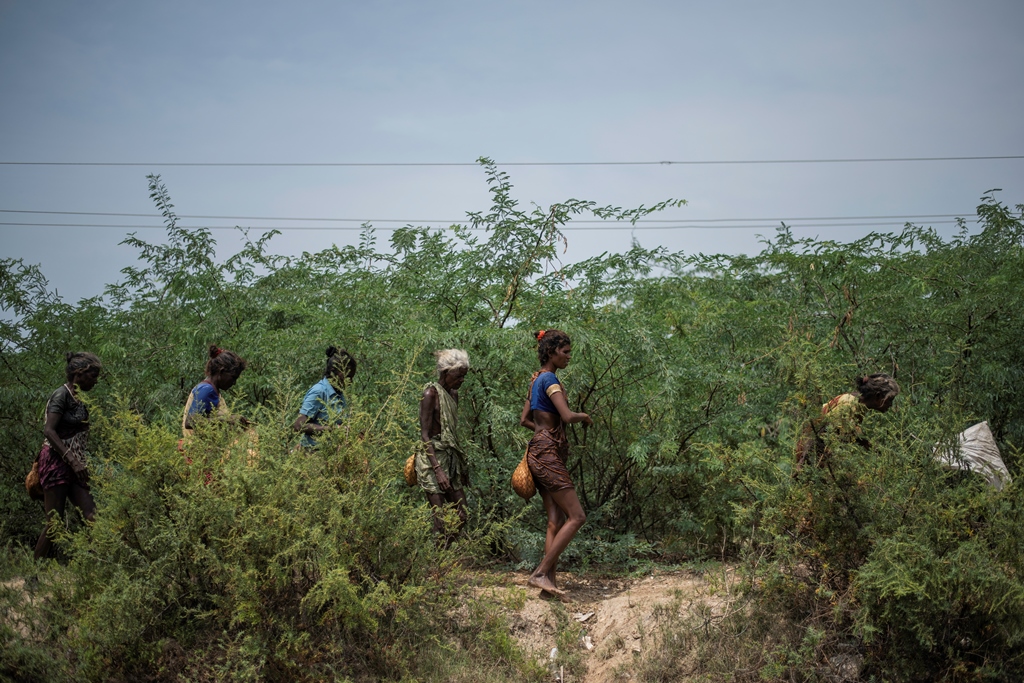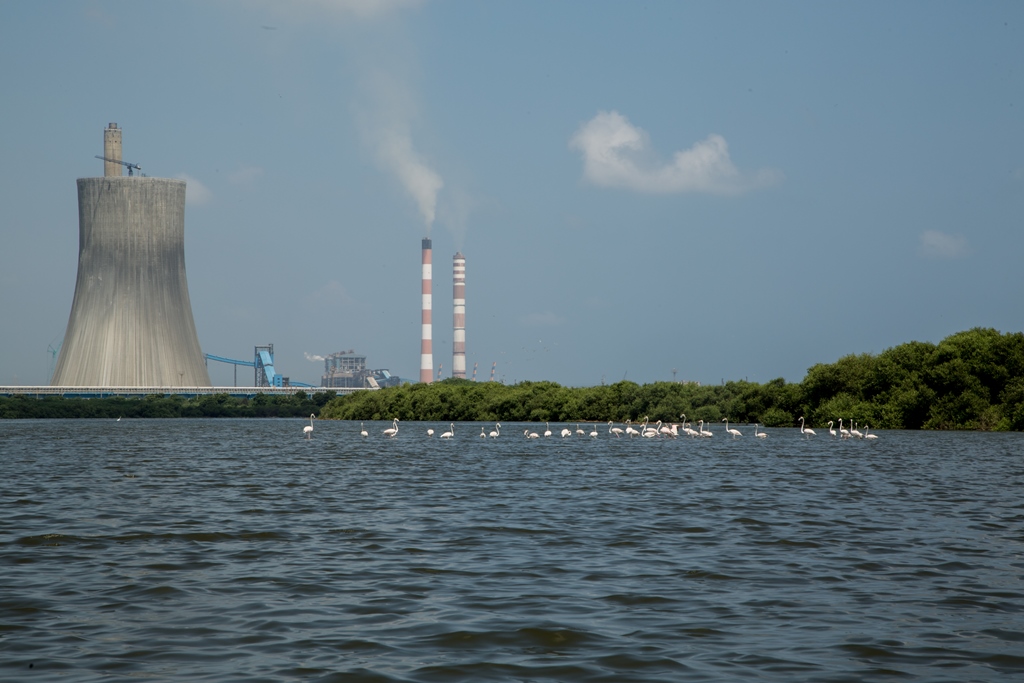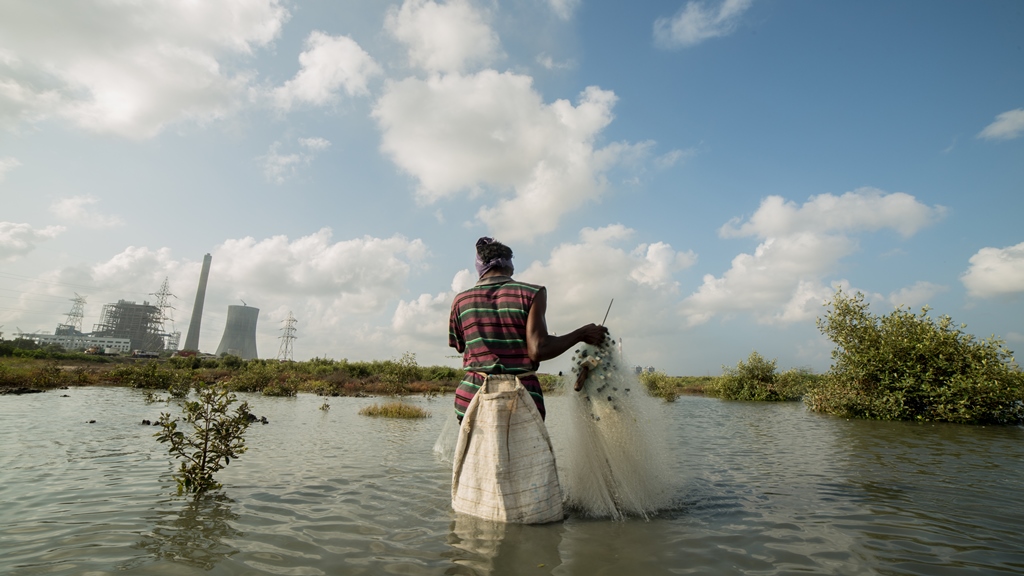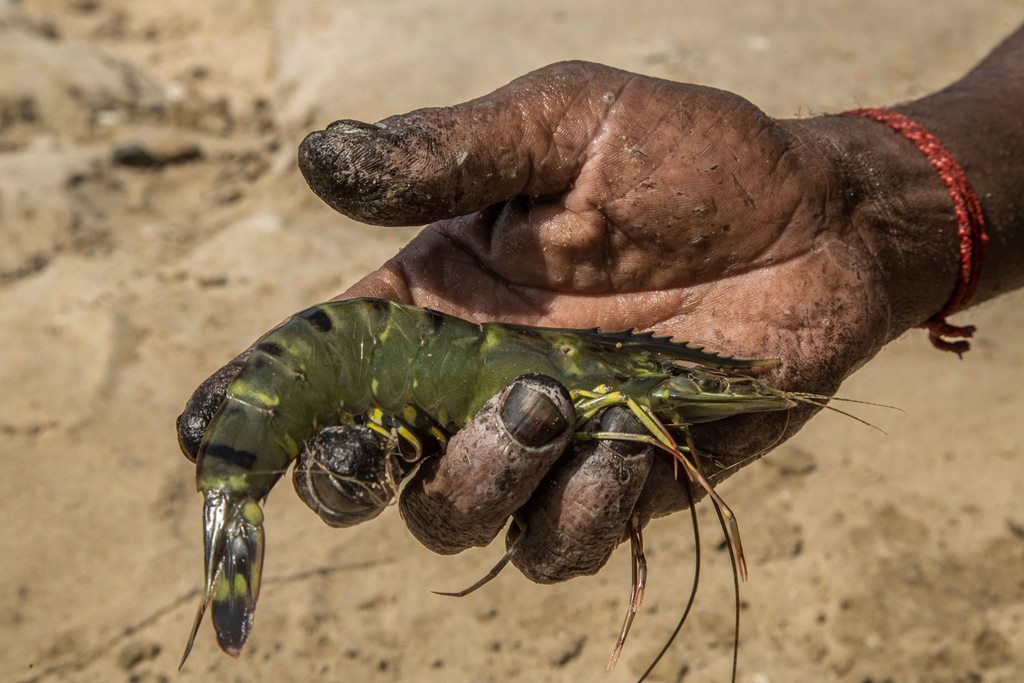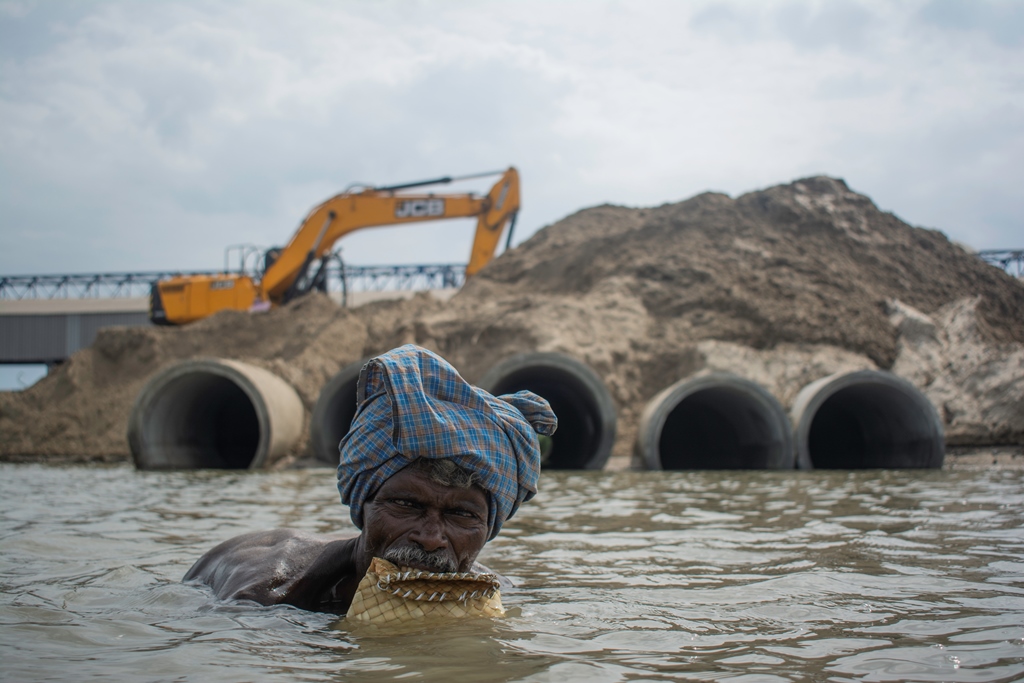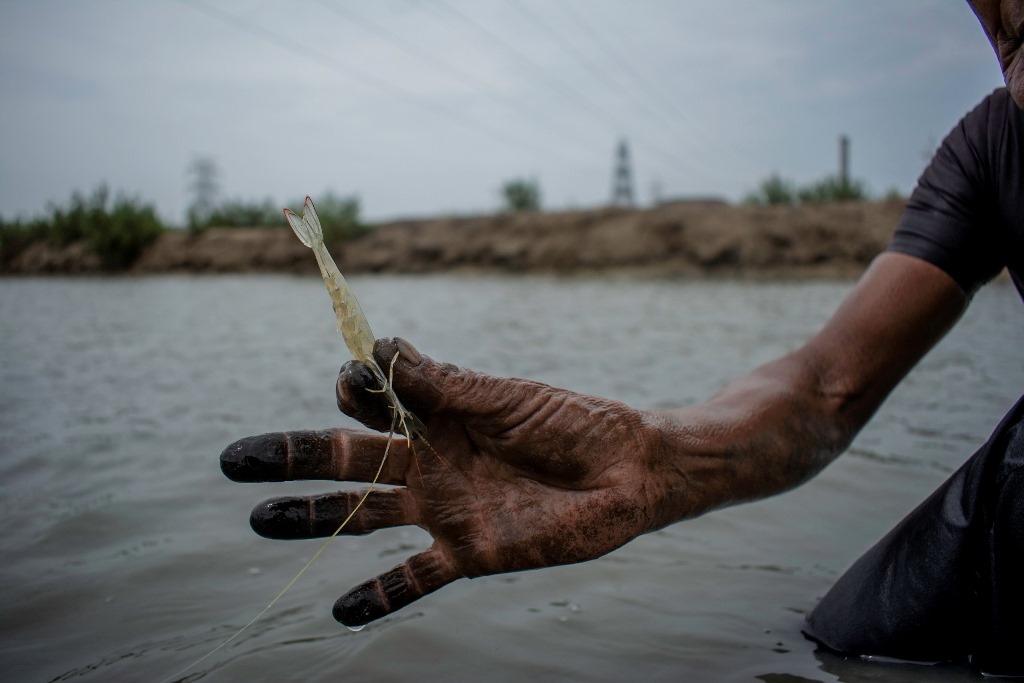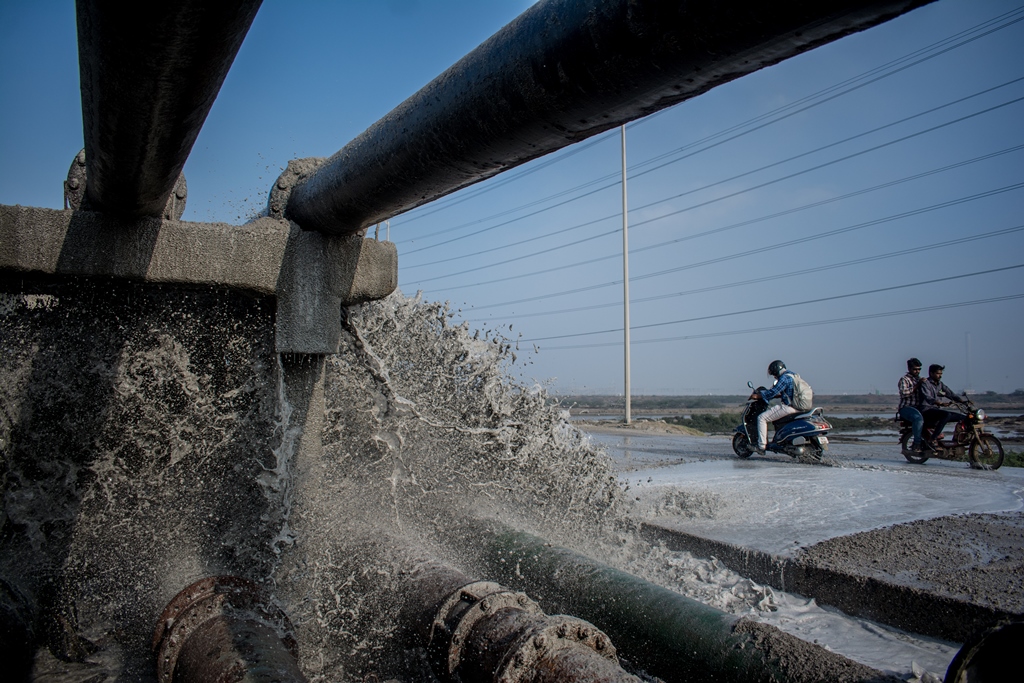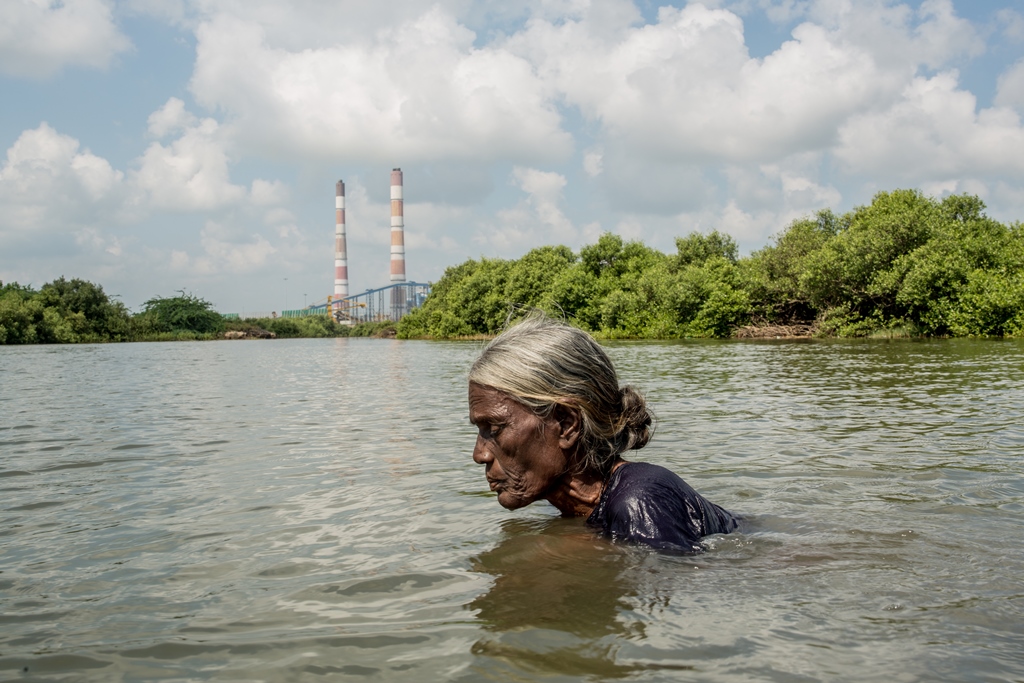Ennore Water Bodies
Palani Kumar
My first visit to Ennore is still fresh in my memory. I was accompanied by persons engaged in land rights in this region, who knew every nook and corner of Ennore. I was awestruck, and couldn’t help feeling that Ennore is so much more different from Chennai though it is an integral part of this city. Ennore has a uniqueness that sets it apart from the rest of Chennai. The terrain gives me a new experience every time I visit – from salt-pans to agricultural lands to estuaries, mangroves and barrier islands, it is rich with resources and forms an important balance in the topography.
The three water bodies – Arani river, Kosasthalaiyar river and Buckingham Canal travel along Ennore to Pazhaverkadu (Pulicut), making the landscape majestic. Livelihoods of people living here depend on these water bodies. They practice different forms of marine culture – seine fishing (with nets), fishing using catamarans and trawlers, shrimp culturing and many more. These water bodies form one of the most important sources of water supply to Chennai. Their significance and its impact on our lives hardly gets noticed. The land here too has much to offer. My first visit to this place left such a lasting impression on me that I haven’t stopped visiting this place for the past 3.5 years. During every visit, I have noticed how changes occurred on the land because of the Thermal Power Plant there. The impact on the environment because of this plant was plainly visible. Yet, the relationship of people with their land had remained invincible. I wanted to document this. By documenting the life around the water bodies, the environmental impact around them, and stories of people who live depending on them, I would like to showcase their importance to the world.
The intimate relationship that exists between land and people is hard to explain with words, I felt pictures would be the right medium to capture the intricacies. One cannot understand their relationship without the landscape in the picture. Spending time with people there, watching closely their lifestyle, I have tried to capture this bond through my photography. I have used the photographs as a medium to express their point of view. I have used different methods. For instance, if they are in the waters, I get down with them and shoot pictures. In this way, I intend to take the viewers to the real world of the people here through my pictures. Their stories and lifestyle inspire me. Most of the workers there are women. They have spent most of their lives, since birth, in this land, and so have their grandchildren. These days, people have started identifying me whenever I visit. Interactions with them are the most important part of my work. A photo exhibition about Ennore is in the pipeline. Four stories that I documented about Ennore will soon be published in the People’s Archives of Rural India (PARI). I invite you to this fascinating world through my lens, my eyes.
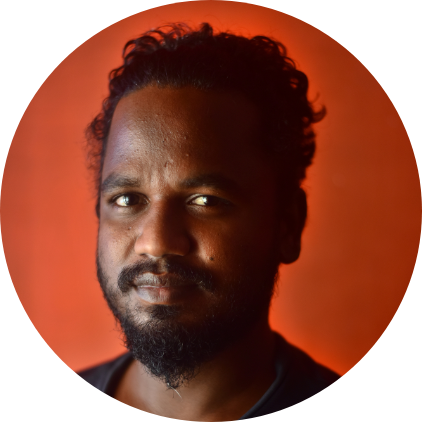
M Palani Kumar
Hailing from the village of Jawaharlalpuram in Madurai district, M Palani Kumar decided to pursue engineering as per the wish of his mother, a fish-seller. He graduated in B.E., E&I under the sports category. In 2013, while he was still pursuing engineering, he applied for a loan and purchased his first camera. He worked as a cinematographer for the critically acclaimed documentary [Kakoos] – a searing narrative on the lives of manual scavengers in Tamil Nadu. In a couple of years, Palani opened his first photography exhibition in Chennai, featuring the work of the children of manual scavengers, who were trained through Palani’s photography workshops.
Since 2019, as a PARI fellow, Palani documents the lives of working-class women. He is also a full-time photographer with the People’s Archive of Rural India. Palani is a member of the Pep Collective – a forum of socially responsible photographers in Tamil Nadu. He was recognised as one of the Top Ten Humans in 2019 by Anandha Vikatan, for his attempt to sensitise and visibilise the work of manual scavengers to an otherwise indifferent world. In March 2020, he received the Best Story of the Year award from the Public Relations Council of India. In October 2020, Palani received The Samyak Drishti and Photo South Asia Grant. In November 2020 he received Imagining the Nation State grant during the Chennai photo biennale. The photographs were later exhibited at the ffoto gallery, in Wales, UK. In March 2021, Palani received the Amplify grant. He hopes to continue using his art form to throw light on marginalised communities.
